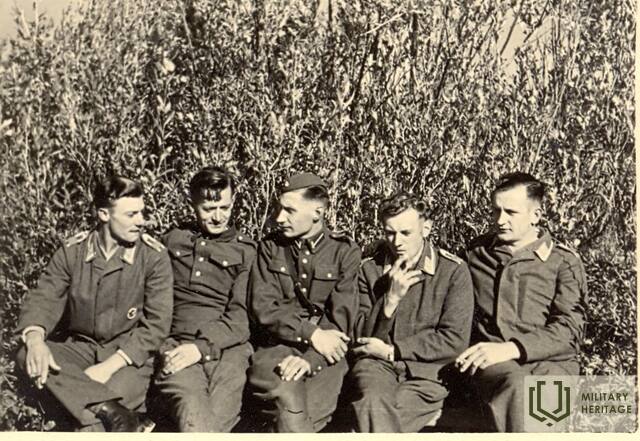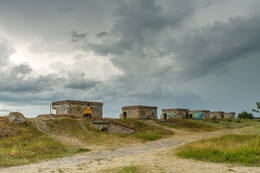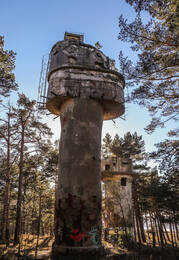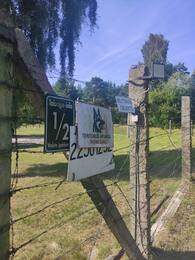Karosta - Saksa He-111 maandumiskoht 1939. aastal Liepaja rannas
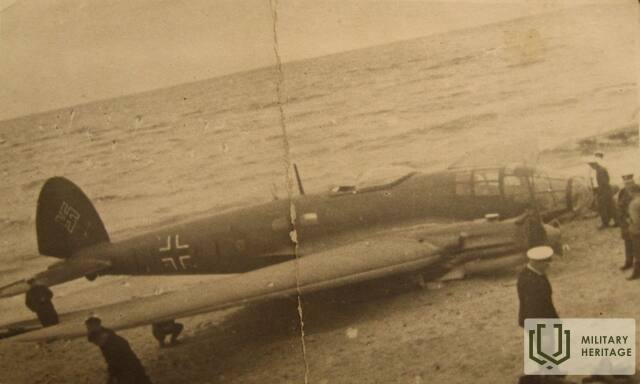
11. septembril 1939 ründas Saksa Henkel He-111 pommitaja Poola linnu, kui ta öösel kursilt kõrvale läks ja sooritas hädamaandumise Liepāja rannas. Sellest sündmusest on jutustatud Liepaja elaniku ja Kuramaa diviisi kontaktkompanii ohvitseri Vilis Zobensi mälestustes. Maandumiskoht on looduses tähistamata. Ligikaudsed koordinaadid on N 56,59368° E 21,01598° - rannas Põhja-Linnuse lähedal.
11. septembri varahommikul häiris kõiki madalalt lendava lennuki müra. Välja minnes nägime suurt halli lennukit, mille tiibadel olid mustad ristid. Peale ringi lendamist maandusime randa. Läksime sinna. See oli maandunud otse mere äärde. Maale oli lahkunud 3 lendurit – kaks Saksa ohvitseri ja üks instruktor. Küsimusele, mis kompanii ülemaga juhtus, vastasid nad, et olid olnud rünnakul Poolale, kuid on kompassi vigastuse tõttu eksinud ega saanud oma baasi tagasi pöörduda. Viisime nad majutuskohta ja näitasime ühes toas. Nende meeste jaoks oli sõda läbi, sest seaduse järgi tuli nad välja kuulutada. Nad said ohvitseride klubist süüa, millega nad ei olnud rahul ja tahtsid rääkida Saksa konsuliga Liepajas. Konsul saabus järgmise päeva sisustama ja korraldas toidud järgmiselt: konsul tasus Liepāja hotellis tellitud lõunasöögi eest. Selle tõi ehtesõdur. Rääkisin saksa motosportlase juhendajaga. Ta oli väga edev ja Hitleri kummardaja. Ka ehete komandöril oli nendega igasuguseid probleeme. Olime kõik õnnelikud, kui nad 1. oktoobril Riiga viidi.
Liepāja elanik, Kurzeme diviisi ohvitseri asetäitja Vilis Zobens alustas teenistust Läti armees 1925. aastal 1. Liepaja jalaväerügemendis. Ajateenistuse ajal koges ta Nõukogude vägede saabumist Lätti.
Mõõk, V. Mälestused, Liepājas Vārds (Läti Rahvarinne). 1992. aasta
Seotud ajajoon
Seotud objektid
Liepaja põhjakindlus ja patarei nr.1 Karostas
Põhjafordid on Liepāja kindluse tuntuim ja visuaalselt kõige muljetavaldavam osa. Selle ajalooline nimetus on Kindlusepatarei nr 1 ja selle ehitas Vene tsaariarmee 19. sajandi lõpus.
Vähem kui 10 aastat pärast Liepāja kindluse ehitamist, 1908. aasta novembris, see likvideeriti, sest selle ehitamist peeti strateegiliseks veaks. Osa kahureid demonteeriti ja viidi Leedus asuvasse Kaunase kindlusesse, osa aga sulatati ümber. Kaitserajatisi detoneeriti kaks korda nende hävitamiseks. Plahvatustest on tänapäevani osaliselt säilinud suurtükipatareid ja maa-alused rajatised. Nii nagu Karosta, olid ka Põhjafordid Nõukogude okupatsiooni ajal suletud sõjaväeala. Põhjaforte külastades tuleb olla väga ettevaatlik. Nagu ka teistel Läti rannikualadel, on ka Karostas Läänemere järsk rannikuala võimalike maalihete tõttu ohtlik. Seetõttu ei ole lubatud kõndida kindluse varemete all.
Karosta, Liepāja sõjasadam (ekskursioon)
Karosta on Baltimaade suurim ajalooline sõjaväeala, mis hõlmab peaaegu kolmandiku kogu Liepāja territooriumist. Karosta on ainulaadne sõjaväe- ja kindlustushoonete kompleks Läänemere kaldal, mis on eriline Läti ja kogu maailma ajaloos ja arhitektuuris. Karostas asuvad sellised militaarpärandi objektid nagu Põhjamuul ja -fordid, redaan, Karosta vangla, Karosta veetorn, Püha Nikolai õigeusu merekatedraal ja Oskars Kalpaksi sild.
Liepāja rannakahuripatarei nr 2
Liepāja Karosta paljude objektide hulgas on Liepāja rannakahuripatarei nr 2 siiani Liepaja salapäraseim koht. Akus nr. 2, paigaldati alati erinevate olemasolevate võimude vägede laskemoonalaod.
Liepaja kindluspatarei nr. 2 ehitati rannajoonest kaugemale ja seda kaitses kõrge vall. Akud olid relvastatud 16 1877. aasta mudeli 11-tollise (280 mm) mördiga. Pärast linnuse lammutamist rajati siia laskemoonalaod. Plahvatusohu tõttu oli territoorium avalikkusele suletud ja valve all 130 aastat, kuid nüüd on seal välja pandud ekspositsioon 1. Kurzeme diviisi staabi tegevusest aastatel 1919-1940 ning fototõendid I. Liepāja jalaväerügement, 2. Ventspilsi jalaväerügement ja Kurzeme suurtükiväerügement.




